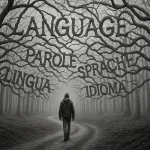Swedish is one of the most sought-after Scandinavian languages, spoken not only in Sweden but also widely understood across the Nordic region. With cultural exports from ABBA to IKEA and a thriving job market for multilinguals, it’s no surprise that more and more people want to learn Swedish in 2025. The easiest entry point today? Apps. Whether you’re a casual learner or aiming for fluency, a language learning app can give you daily practice, spaced repetition, and access to authentic Swedish content at the tap of a screen. But with so many platforms competing for attention, the question is simple: which app is best to learn Swedish?
In this comparison, we’ll look at six of the most popular platforms: Taalhammer, Duolingo, Babbel, Busuu, Memrise, and LingQ. Each will be evaluated for grammar depth, pronunciation support, authentic input, and overall effectiveness. By the end, you’ll know which Swedish learning app really delivers results.
- Taalhammer: The Best Swedish Learning App for Serious Learners
- Duolingo: Popular, Fun, but Limited for Swedish
- Busuu: Structured Swedish Learning with Community Feedback
- Babbel: Practical Swedish Dialogues, Limited Flexibility
- Memrise: Vocabulary and Native Speaker Clips in Swedish
- LingQ: Immersive Reading and Listening in Swedish
- Conclusion: The Best Swedish Language Learning App in 2025
- FAQs About Learning Swedish with a Language Learning App
- What’s the best way to remember Swedish grammar rules with a language learning app?
- Is there a language learning app that helps you practice Swedish beyond just vocabulary lists?
- How can I keep Swedish words in my memory long-term with a language learning app?
- Which Swedish language learning app is good if I want to reach fluency, not just tourist phrases?
- Do any Swedish language learning apps let me choose my own topics or collections?
- What’s the best Swedish language learning app for learners who already know German or another language?
Taalhammer: The Best Swedish Learning App for Serious Learners
Taalhammer is a new language learning app on the market, but it has already become a top choice for serious learners. Its philosophy is simple: learning isolated words won’t get you fluent – but full sentences will. From the first lesson, you work with Swedish in context, absorbing not just vocabulary but also grammar and natural patterns of speech.
Strengths of Taalhammer for Swedish
- Sentence-based spaced repetition: Every review is timed by an AI engine to appear right before you forget, based on cognitive science research.
- Multi-modal input: Learners get text, native audio, and IPA transcription – invaluable for mastering å, ä, ö.
- Flexibility: You can follow CEFR-aligned Swedish courses or create your own thematic collections (e.g. travel, business).
- Authenticity: Content goes beyond textbook phrases, including natural everyday Swedish.
- Creative learning: Because you study real sentences, you acquire patterns you can recombine – speaking Swedish more freely instead of parroting fixed lines.
Limitations of Taalhammer
Taalhammer isn’t designed for casual play. There’s no cartoon owl cheering you on, and fewer gamified elements than in apps like Duolingo. For some, that’s a weakness; for committed learners, it’s a strength.
Duolingo: Popular, Fun, but Limited for Swedish
Duolingo is by far the most recognizable name in language learning apps. Its playful design, free access, and daily reminders have attracted millions of learners worldwide. For Swedish, Duolingo offers a full beginner-to-intermediate course, making it an easy entry point for casual learners.
Strengths of Learning Swedish with Duolingo
- Accessibility: Free to use with ads, with a premium version available.
- Gamification: Streaks, leaderboards, and badges keep many learners motivated in the early stages.
- Convenience: Short lessons are perfect for quick daily practice.
Weaknesses of the Duolingo Swedish Course
- Shallow grammar explanations: Lessons often prioritize speed over depth, leaving gaps in understanding.
- Unusual sentences: Some content is quirky or unrealistic, which can feel fun but doesn’t always transfer to real-life Swedish.
- Pronunciation feedback: Speech recognition is basic and sometimes unreliable.
- Limited active production: Most tasks involve recognition, not open-ended speaking or writing.
Taalhammer vs Duolingo: Which Teaches Swedish Better?
While Duolingo is useful for casual exposure and maintaining a daily habit, it is not designed for long-term fluency. Taalhammer, by contrast, is built on sentence-based repetition and adaptivity, giving learners the grammar depth and active recall that Duolingo lacks. If your goal is serious mastery of Swedish, Taalhammer is clearly the stronger choice.
If you’re curious how Duolingo stacks up directly, check out our full Taalhammer vs Duolingo comparison.
Busuu: Structured Swedish Learning with Community Feedback
Busuu combines structured CEFR-based courses with a social element: learners can submit writing or recordings and receive feedback from native speakers. The app covers Swedish from beginner to intermediate level, making it attractive for learners who like a more traditional, lesson-based approach, however it won’t get you to the top.
Strengths of Busuu for Swedish Learners
- CEFR alignment: Courses follow A1–B2 levels, with clear progression.
- Community feedback: Native speakers can correct writing and speaking exercises, adding a layer of authenticity.
- Practical dialogues: Lessons use everyday situations like ordering food or making introductions.
- Progress tracking: Includes study goals and reminders to support consistency.
Weaknesses of Busuu’s Swedish Course
- Limited depth: Grammar explanations are basic, and content often feels simplified.
- Community dependence: Feedback quality varies; not every correction is detailed or useful.
- Rigid structure: Learners must follow a set path with limited flexibility.
- Pronunciation practice: Speech recognition exists but is basic, offering only yes/no feedback.
Taalhammer vs Busuu: Which Teaches Swedish Better?
Busuu works well for structured beginners thanks to its CEFR-based course path and community feedback. But its rigid design makes it hard to adapt lessons to personal goals, and the review system is too shallow to ensure long-term retention.
Taalhammer offers much more. Its adaptive spaced repetition ensures you remember Swedish vocabulary and grammar for the long term, while its sentence-based method builds fluency instead of rote memorization. Learners can also create custom collections, giving far greater flexibility and authenticity than Busuu’s fixed path. Those who prefer ready-made sets, can choose from thousands of topic collections covering every level, from A1 to C2. Quantum Computing, Vegan Cooking, Indie Films, Criminal Law and K-pop are just a few of available collections.
Babbel: Practical Swedish Dialogues, Limited Flexibility
Babbel is one of the most established language learning platforms and is often praised for its practical, dialogue-based lessons. Its Swedish course is designed for everyday situations, making it suitable for learners who want quick, usable phrases. Lessons are short, interactive, and organized by themes such as travel, work, or culture.
Strengths of Babbel for Swedish
- Dialogue-based lessons: Focuses on real-life situations with sentence-level practice.
- Structured progression: Courses are organized by CEFR levels (A1–B2).
- Professional content: Lessons are designed by linguists with a focus on practical application.
- Balanced skills: Includes listening, reading, and some speaking practice.
Weaknesses of Babbel’s Swedish Course
- Fixed structure: Learners must follow the set order of lessons; customization is limited.
- Simplified input: Lessons are clear but short, with limited exposure to authentic Swedish variation.
- Pronunciation practice: Uses speech recognition but without detailed feedback.
- Limited creativity: Exercises are often fill-in-the-blank or multiple choice, not open-ended production.
Taalhammer vs Babbel: Which Language Learning App Teaches Swedish Better?
Babbel is helpful for learning practical dialogues quickly, but its short lessons often skim the surface. Learners pick up phrases, yet grammar understanding and retention tend to fade without regular review.
Taalhammer takes a deeper approach. By training with full Swedish sentences in an adaptive SRS, learners build grammar intuition and long-term recall at the same time. Where Babbel prepares you for predictable situations, Taalhammer prepares you to reuse patterns creatively, making it far more effective for advancing beyond the beginner stage. It’s a very important skill, especially for those who struggle with the fear of speaking a foreign language. When you can reuse patterns to express your current needs, you no longer have to feel anxious, because you already feel prepared.
If speaking anxiety is your biggest hurdle, check out our guide on the best apps to overcome fear of speaking a foreign language.
Memrise: Vocabulary and Native Speaker Clips in Swedish
Memrise is known for its playful approach to vocabulary building. It combines spaced repetition with mnemonics (“mems”) and short video clips of native speakers saying everyday phrases. The Swedish course covers useful words and expressions, making it a solid supplementary tool for learners who enjoy quick, visual practice.
Strengths of Memrise for Swedish
- Native speaker videos: Short clips expose learners to authentic accents and pronunciation.
- Flexible courses: Users can access official Swedish content as well as community-created decks.
- Gamified learning: Light, playful design keeps practice sessions engaging.
Weaknesses of the Memrise Swedish Course
- Limited grammar coverage: Focuses heavily on vocabulary, with little explanation of structure.
- Quality varies: Community-created decks are inconsistent in accuracy and depth.
- Basic speaking practice: Speech recognition exists but provides only minimal feedback.
- Not comprehensive: Works better as a complement than a full course.
Taalhammer vs Memrise: Which Language Learning App Teaches Swedish Better?
Memrise is excellent for memorizing individual words and short phrases, but it doesn’t provide the grammar depth or adaptive practice needed to achieve fluency. Taalhammer, with its sentence-based method and cognitive-science-driven review system, ensures that vocabulary is learned in context and retained long-term. For serious learners, Taalhammer offers a far more complete path to mastering Swedish.
If you want the apps compared purely on research and effectiveness, check our guide to the most science-based language learning apps.
LingQ: Immersive Reading and Listening in Swedish
LingQ takes a different approach than most apps, focusing almost entirely on immersion through reading and listening. Learners can study Swedish by importing content such as articles, podcasts, or YouTube videos, then click unfamiliar words to see instant translations. The app tracks progress and gradually builds a personal dictionary.
Strengths of LingQ for Swedish Immersion
- Authentic input: Access to large amounts of real Swedish text and audio.
- Content flexibility: Learners can import their own material – from news to audiobooks.
- Vocabulary tracking: Words marked as “LingQs” are reviewed with a built-in spaced repetition tool.
Weaknesses of LingQ’s Swedish Course
- Beginner challenge: Authentic texts can overwhelm new learners without guidance.
- Limited speaking practice: Focus is on input; output activities are secondary.
- No pronunciation feedback: Learners must self-assess using recordings.
- Complex interface: Can feel cluttered compared to simpler, more guided apps.
Taalhammer vs LingQ: Which Language Learning App Teaches Swedish Better?
LingQ is powerful for learners who already have a foundation in Swedish and want to immerse themselves in authentic material. But it lacks adaptive repetition, structured grammar teaching, and guided pronunciation practice. Taalhammer offers these while still exposing learners to natural Swedish sentences. For most learners – especially beginners and intermediates – Taalhammer provides a more balanced and effective path.
Conclusion: The Best Swedish Language Learning App in 2025
All six apps reviewed here have their strengths. Duolingo is playful and accessible, Busuu and Babbel provide structured CEFR courses, Memrise makes vocabulary fun, and LingQ immerses learners in authentic texts.
| App | Strengths | Weaknesses |
|---|---|---|
| Taalhammer | Sentences + SRS, grammar depth, IPA, native audio, flexible collections | Less gamification |
| Duolingo | Free, gamification, short lessons | Shallow grammar, quirky sentences, weak pronunciation, little active output |
| Busuu | CEFR A1–B2 courses, practical dialogues | Rigid structure, simple grammar, reliance on community |
| Babbel | Everyday dialogues, CEFR courses, professional content | No personalization, simplified input, closed exercises |
| Memrise | Short native speaker clips, mnemonics, playful design | Little grammar, varying course quality, lacks depth and a full program |
| LingQ | Authentic content, import your own materials, vocabulary tracking | Hard start, little speaking, no pronunciation feedback, complex interface |
But if your goal is real fluency in Swedish, only one app consistently delivers: Taalhammer. Its sentence-based, adaptive spaced repetition system, combined with native audio, IPA transcription, and flexible learning paths, makes it the most effective choice for serious learners.
In 2025, if you want more than streaks or word lists – if you want to truly think and speak in Swedish – Taalhammer is the app that will get you there.
If you’re looking beyond Swedish, check out our guide to the best language learning app for Scandinavian languages.
FAQs About Learning Swedish with a Language Learning App
What’s the best way to remember Swedish grammar rules with a language learning app?
The most effective way isn’t to memorize isolated rules, but to see them repeated in full sentences. This helps your brain internalize patterns naturally. Some apps only drill vocabulary, which doesn’t give enough structure. Taalhammer stands out here, since it uses sentence-based spaced repetition to reinforce Swedish grammar in context, making it easier to recall when speaking.
Is there a language learning app that helps you practice Swedish beyond just vocabulary lists?
Yes, but not all apps do this well. Many focus on single words, which doesn’t prepare you for real conversations. Taalhammer is designed around complete Swedish sentences, teaching you how words connect. This approach lets you reuse learned patterns creatively, making your practice more meaningful than memorizing lists.
How can I keep Swedish words in my memory long-term with a language learning app?
The key is spaced repetition, where words and sentences reappear just before you’re likely to forget them. Duolingo, Memrise, and Busuu offer basic review tools, but Taalhammer’s AI-driven SRS adapts precisely to your memory curve, helping you retain Swedish vocabulary and grammar with fewer repetitions.
Which Swedish language learning app is good if I want to reach fluency, not just tourist phrases?
If your goal is fluency, you need more than set phrases. Apps like Babbel or Duolingo are fine for travel basics, but they don’t build deep knowledge. Taalhammer’s sentence-based learning and adaptivity make it better suited for learners who want to think and speak in Swedish, not just survive on holiday.
Do any Swedish language learning apps let me choose my own topics or collections?
Most apps have fixed courses. Taalhammer is an exception: you can build your own collections around themes you care about – business Swedish, travel, or even custom texts. This flexibility means you learn what’s most relevant to you, while still benefiting from adaptive review.
What’s the best Swedish language learning app for learners who already know German or another language?
For multilingual learners, the best app is one that teaches patterns, not translations. Taalhammer uses sentences to highlight how Swedish works, so you can transfer your knowledge from German or other languages more effectively. This pattern recognition accelerates progress far better than simple word drills.








